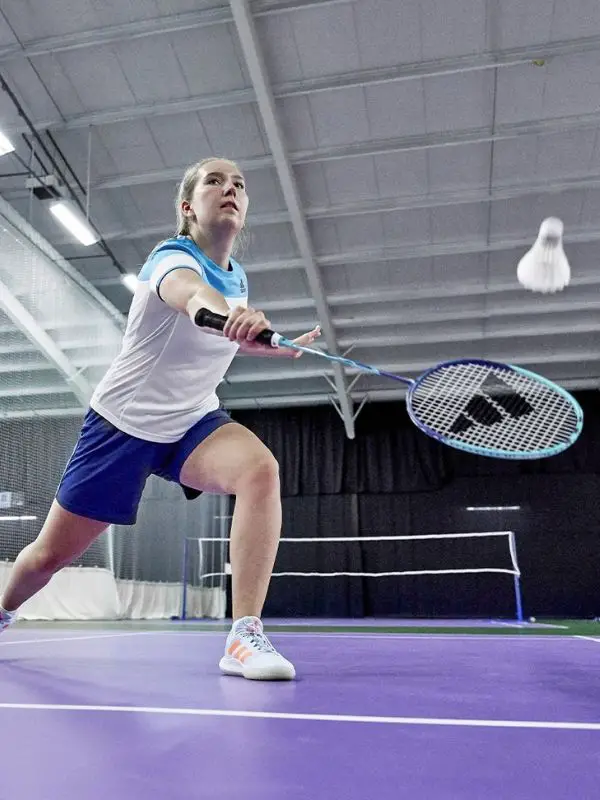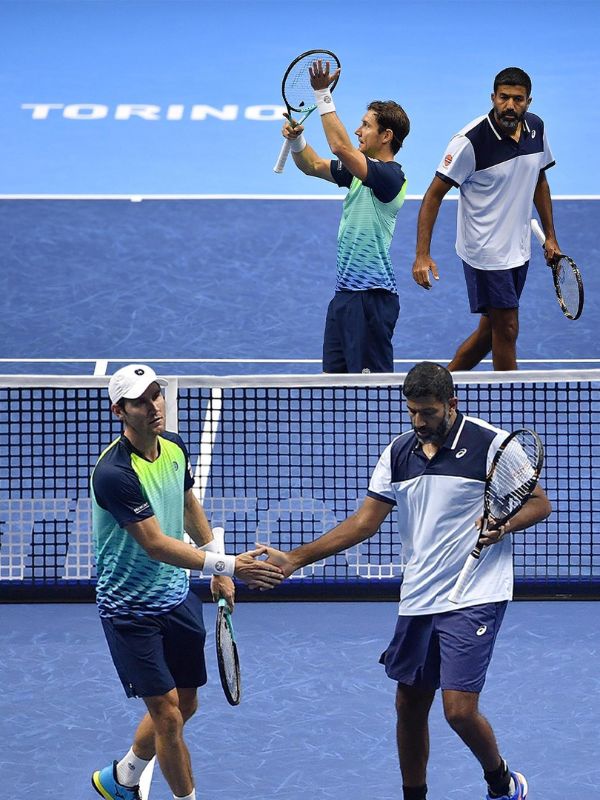Badminton is considered harder than tennis due to its faster pace and more demanding technical skills. Many badminton players and experts claim that it is much harder to master than tennis, as studies have shown.
Badminton requires quick footwork, agility, and precise hand-eye coordination, making it a physically and technically challenging sport.
On the other hand, while tennis also requires physical fitness and coordination, the slower pace of the game allows players more time to react.
Ultimately, the difficulty of each sport depends on personal preferences and abilities.
Court Dynamics And Gameplay
When it comes to court dynamics and gameplay, there are several factors that differentiate badminton from tennis. Firstly, court size plays a significant role in both sports. A badminton court is smaller and narrower compared to a tennis court.
This difference in size directly impacts player movement. In badminton, players need to cover a shorter distance and make quick, explosive movements to reach the shuttlecock. On the other hand, tennis players cover a larger area and require more endurance and agility.
Another aspect that sets badminton apart is the shuttlecock versus tennis ball dynamics. The shuttlecock is lightweight and easily affected by the wind, making it more challenging to control.
In contrast, a tennis ball is heavier and more predictable in its trajectory. These variations in dynamics require players to adapt their techniques and strategies accordingly.
Furthermore, the indoor versus outdoor play conditions add another layer of complexity to the sports. Badminton is primarily played indoors, with controlled lighting and minimal external factors.
Tennis, on the other hand, can be played both indoors and outdoors, with outdoor matches being more susceptible to weather conditions, such as the wind and sun glare.
Equipment And Technique

Badminton and tennis are both great sports, but they have differences in equipment and technique. When it comes to the racket, there are differences in weight, size, and grip.
Badminton rackets are typically lighter and have a smaller head size compared to tennis rackets. The grip size may also vary between the two sports.
When it comes to striking techniques, badminton uses a shuttlecock while tennis uses a ball. The striking techniques for these two objects are different as well. Badminton requires precise and delicate shots, with players using a combination of wrist and forearm movements.
On the other hand, tennis requires more powerful shots using a combination of arm and shoulder movements.
Footwork and stamina are important in both sports, but badminton tends to require more agility and quick movements compared to tennis. Badminton players need to cover the court quickly and react to fast-paced rallies.
Tennis players, on the other hand, need to maintain stamina and endurance for longer matches. Overall, both sports require different skills and techniques, making it difficult to determine which is harder.
Physical And Mental Demands
Badminton and tennis are both physically and mentally demanding sports. Let’s compare the cardiovascular intensity and energy expenditure between the two. In badminton, players have to cover a larger area of the court, resulting in higher energy expenditure compared to tennis.
The fast-paced rallies in badminton require quick reflexes and agility to return shots, putting a greater demand on the player’s physical abilities.
Additionally, the psychological pressures in match-play scenarios add another layer of challenge. Players need to stay focused and make split-second decisions, adding to the mental demands of the game.
Overall, both sports have their unique challenges, and the difficulty can vary depending on an individual’s skills and abilities. However, it’s safe to say that badminton and tennis both require a combination of physical fitness, agility, and mental strength to excel.
Skill Development And Mastery
When it comes to skill development and mastery, both badminton and tennis have their unique challenges. For beginners, the learning curve can be steep in both sports as they require learning the fundamental techniques and strategies.
In badminton, players need to master skills such as proper grip, footwork, and racket control, while in tennis, players need to focus on stroke mechanics, footwork, and court positioning.
As players progress in both sports, advanced techniques and skill sets come into play. In badminton, players need to develop their net play, smashes, and defensive skills. In tennis, players need to master topspin shots, volleys, and serve-and-volley tactics.
Reaching proficiency in both sports requires a significant time investment. Consistent practice and match play are crucial in developing the necessary skills and game sense.
Achieving proficiency can take months or even years, as players need to train their physical abilities, technical skills, and tactical understanding.
Athletic Training And Conditioning

When it comes to athletic training and conditioning, sport-specific training regimens play a crucial role in determining the difficulty level of a particular sport. Both badminton and tennis require specific strength and flexibility requirements that athletes must adhere to.
In badminton, players need quick and explosive movements, agility, and hand-eye coordination. Similarly, tennis demands endurance, power, and lateral movements.
In terms of injury risks and prevention strategies, both sports can pose different challenges. Badminton players are at a higher risk of wrist and shoulder injuries due to the rapid and repetitive racquet movements.
On the other hand, tennis players often face knee and lower back injuries due to the intensive running and twisting motions.
Overall, the difficulty of badminton and tennis can vary based on individual preferences and skill levels. While badminton requires agility and quick reflexes, tennis demands endurance and power.
Both sports have their own unique challenges and mastering them requires dedication and practice.
Competitive Scene And Player Perspectives
When it comes to comparing the difficulty levels of badminton and tennis, it is important to take into account the competitive scene and player perspectives. Both sports have their own unique challenges and require different skill sets.
Popularity and cultural influence play a significant role in determining the difficulty of a sport. Tennis is widely regarded as one of the most popular and prestigious sports globally, with a massive fan base and numerous high-profile tournaments such as the Wimbledon and the US Open.
On the other hand, while badminton may not have the same level of global recognition as tennis, it is immensely popular in countries like China, Indonesia, and India.
When it comes to the insights of professional players, opinions may vary. Some athletes may find badminton more challenging due to its fast-paced nature, requiring quick reflexes and agility.
Others may argue that tennis is harder as it demands greater physical endurance and a wider range of skills like serving, volleying, and baseline play.
In terms of global tournaments and championships, tennis has a more extensive and competitive circuit with multiple Grand Slam events and the ATP and WTA tours.
Badminton, while it has its own prestigious events like the BWF World Championships and the Olympics, may not have the same level of global recognition.
Final Thoughts
Ultimately, the difficulty of badminton compared to tennis is subjective and dependent on personal preference and skill set.
Badminton is known for its faster pace and requires agility and quick reflexes, making it challenging to master. On the other hand, tennis demands a combination of power, precision, and endurance.
Both sports have their own unique challenges, and it ultimately comes down to individual strengths and weaknesses.
So, whether you find badminton or tennis harder, what matters most is enjoying the sport and continuously improving your skills.